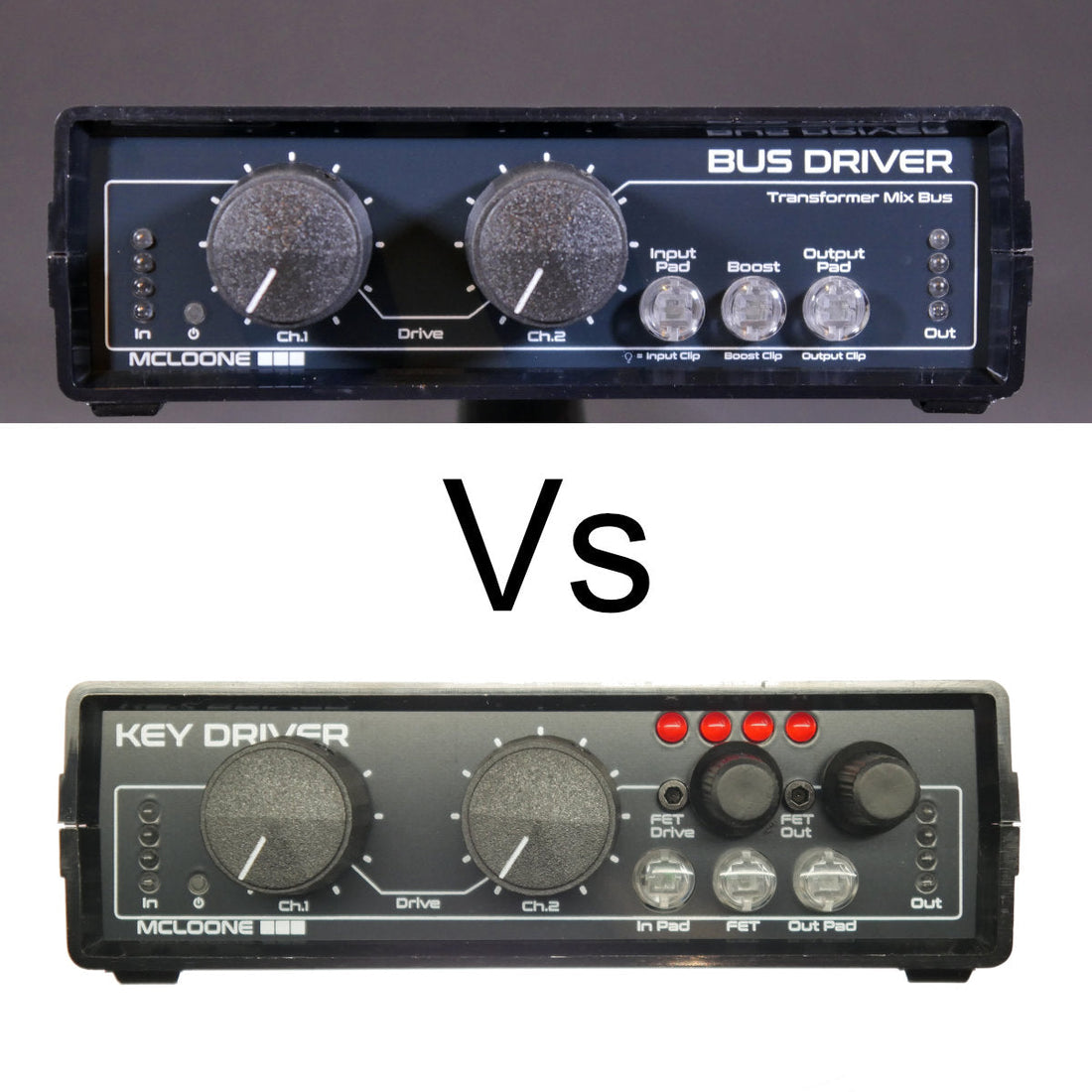
Key Driver Vs Bus Driver
Share
Summary:
Working with mostly line level sources, controllable FET overdrive circuit, subtle transformer saturation - Key Driver
Working with analog summing units, dynamic mics, subtle transformer saturation - Bus Driver
Key Driver Details
If you are mostly using line level sources such as synths, keyboards and audio interfaces, then the Key Driver presents the most bang-for-buck of the two units. The 30dB of class-A gain it has is more than enough for any line level scenario. For example, you could take the output of a small desktop/pocket synth from -10dBV (-7.78dBu) all the way to +22dBu. Great for live use and bumping up those smaller devices to a +4dBu balanced level. The output transformers will also stop hum from reaching a PA system, just as you would get with an expensive active-DI box.
Mic Mountain
If you are going to do analog summing through a passive summing unit, such as Mini-Bus 10 or Mini-Bus 16, then re-amping through Bus Driver with it's 40dB of class-A gain is a doodle. This amount of gain is wandering past line-level plains and beginning to climb mic-mountain. There is so much clean gain available, that if you were to plug a dynamic mic into Bus Driver, you could use it as a perfectly good stereo mic pre-amplifier. Add a 48V phantom source in between, and it's possible to amplify even crisp capacitor mics to line level.
